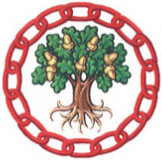British In India
Explore names of British people who either lived, worked or travelled in India from as early as 1664 up to 1961. This collection includes carefully indexed records of births, marriages, divorces and deaths. With one record you may reveal numerous family names and extensive biographical details.
See description
Explore names of British people who either lived, worked or travelled in India from as early as 1664 up to 1961. This collection includes carefully indexed records of births, marriages, divorces and deaths. With one record you may reveal numerous family names and extensive biographical details.
Learn more about these records
With each record, you can view an image of the original index card and a transcript created from information found on the card. The amount of information in the transcripts will vary depending on the event recorded. In many cases, the image of the card will provide even more biographical detail about your ancestor than the transcript.
This card index recorded baptisms, births, burials, deaths, divorces, relocations, marriages, probates of wills, residences and witnesses to events.
The detail in each record will vary. In the records you may find a combination of the following information:
-
Name
-
Year
-
Spouse’s name
-
Father’s name
-
Mother’s name
-
Place
-
County and country
-
Notes
-
Event type
-
Source
British in India documents female relatives of officers of the Bengal Army, Madras Army and Bombay Army, along with British civil servants, chaplains, merchants, plantation owners, labourers and British people in India after the East India Company period. The index cards are full of biographical and genealogical information about people from all parts of society.
The records are an excellent source for a family historian with ancestors who went to India. Each card provides great detail and can help link together different relations within your family tree. For example, in the records, we discover that, Mary Swinton, daughter of Colonel William Swinton HCS, died at the age of 90 on 20 March 1917 in Charlton, Kent. Not many death records would have recorded Mary’s father’s name, especially since she died at the age of 90.
In another card, there is a plethora of biographical detail about Samuel Smith’s family. On 26 August 1811, Smith married Miss Mary Elizabeth Hyde. They had three daughters: Martha Rose Diana, Frances Cordelia and Georgiana Mary. The card has also included the names of the daughters’ spouses, the rank of their husbands and the date of their marriages. From this one record, you would be able to add seven more names to your family tree.
Women in India Index
The Women in India Index was compiled my Major Vernon Charles Padget Hodson (1883-1963), Lt. Col. Herbert Kendall Percy-Smith FSG (1897-1975) and others. This collection was originally created as a subset to an index by Hodson which was bequeathed to the National Army Museum after his death. Hodson contributed many valuable articles to the journal Bengal Past and Present and to the Genealogists’ Magazine, including a series of articles “Some Families with a Long East India Connection.” His obituary in Genealogists’ Magazine referenced Hodson’s index and described it as, ‘packed with biographical and genealogical information on many thousands of persons, sprung from all levels of society. Here we find the sons, [wives and daughters] of plumbers, glaziers and hairdressers rubbing shoulders with a natural son of Frederick Prince of Wales and with the young aristocracy of the eighteenth century’.
Colonel Percy-Smith also bequeathed his papers to the National Army Museum (NAM). Afterwards, it was realised that the information provided on the Women in India cards was repeated by the original index. To avoid unnecessary duplication in their collection, the NAM forwarded the Women of India index cards to the Society of Genealogists who then transcribed the cards.
